Skitouring Boots
.

- - 39 %
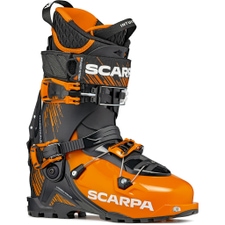 ScarpaMaestrale Ski Touring Boots Orange / Black MenMSRP 568,95 €349,00 €Available Sizes:EU | UK | US | CM27,029,029,530,030,5
ScarpaMaestrale Ski Touring Boots Orange / Black MenMSRP 568,95 €349,00 €Available Sizes:EU | UK | US | CM27,029,029,530,030,5
- - 33 %
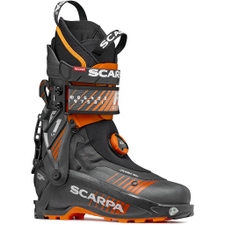 ScarpaF1 LT Ski Touring Boots Carbon / Orange MenMSRP 798,95 €539,00 €Available Sizes:EU | UK | US | CM25,026,027,028,029,0
ScarpaF1 LT Ski Touring Boots Carbon / Orange MenMSRP 798,95 €539,00 €Available Sizes:EU | UK | US | CM25,026,027,028,029,0
- - 56 %
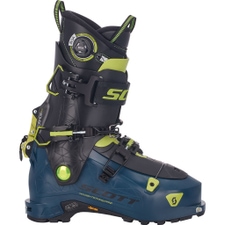 ScottCosmos Pro Ski Touring Boots Blue / Black MenMSRP 679,95 €299,00 €Available Sizes:EU | UK | US | CM25,025,526,026,527,0
ScottCosmos Pro Ski Touring Boots Blue / Black MenMSRP 679,95 €299,00 €Available Sizes:EU | UK | US | CM25,025,526,026,527,0
- - 30 %
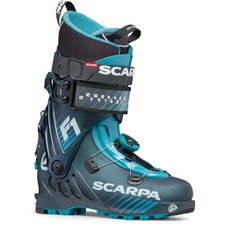 ScarpaF1 Ski Touring Boots Anthracite / Ottanio MenMSRP 668,95 €469,00 €Available Sizes:EU | UK | US | CM25,526,026,527,027,5
ScarpaF1 Ski Touring Boots Anthracite / Ottanio MenMSRP 668,95 €469,00 €Available Sizes:EU | UK | US | CM25,526,026,527,027,5
- - 49 %
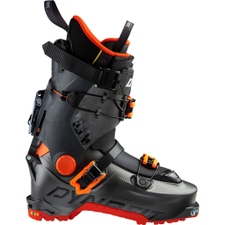 DynafitHoji Free Ski Touring Boots Magnet MenMSRP 779,95 €399,00 €Available Sizes:EU | UK | US | CM25,025,526,026,527,0
DynafitHoji Free Ski Touring Boots Magnet MenMSRP 779,95 €399,00 €Available Sizes:EU | UK | US | CM25,025,526,026,527,0
- - 39 %
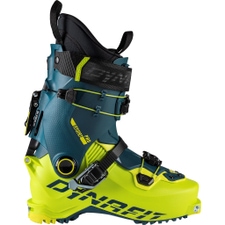 DynafitRadical Pro Ski Touring Boots Petrol / Lime Punch MenMSRP 649,95 €399,00 €Available Sizes:EU | UK | US | CM30,531,0
DynafitRadical Pro Ski Touring Boots Petrol / Lime Punch MenMSRP 649,95 €399,00 €Available Sizes:EU | UK | US | CM30,531,0
- - 30 %
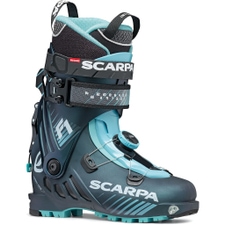 ScarpaF1 WMN Ski Touring Boots Anthracite / Aqua WomenMSRP 668,95 €469,00 €Available Sizes:EU | UK | US | CM22,022,523,023,524,0
ScarpaF1 WMN Ski Touring Boots Anthracite / Aqua WomenMSRP 668,95 €469,00 €Available Sizes:EU | UK | US | CM22,022,523,023,524,0
- - 54 %
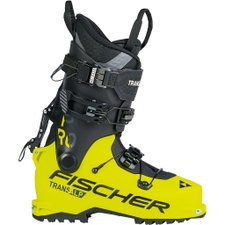 FischerTransalp Pro Ski Touring Boots Yellow / Black MenMSRP 859,90 €399,00 €Available Sizes:EU | UK | US | CM24,525,526,527,528,5
FischerTransalp Pro Ski Touring Boots Yellow / Black MenMSRP 859,90 €399,00 €Available Sizes:EU | UK | US | CM24,525,526,527,528,5 - - 56 %
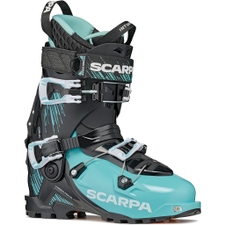 ScarpaGea Ski Touring Boots Aqua / Black WomenMSRP 568,95 €249,00 €Available Sizes:EU | UK | US | CM22,523,023,524,024,5
ScarpaGea Ski Touring Boots Aqua / Black WomenMSRP 568,95 €249,00 €Available Sizes:EU | UK | US | CM22,523,023,524,024,5
- - 39 %
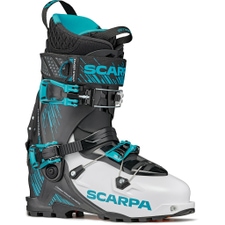 ScarpaMaestrale RS Ski Touring Boots White / Black / Azure MenMSRP 648,95 €399,00 €Available Sizes:EU | UK | US | CM25,526,026,527,027,5
ScarpaMaestrale RS Ski Touring Boots White / Black / Azure MenMSRP 648,95 €399,00 €Available Sizes:EU | UK | US | CM25,526,026,527,027,5
- - 31 %
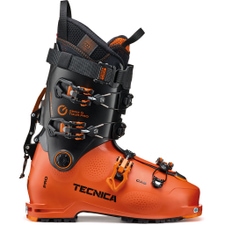 TecnicaZero G Tour Pro Ski Touring Boots Orange / Black MenMSRP 799,95 €549,00 €Available Sizes:EU | UK | US | CM28,028,529,029,530,0
TecnicaZero G Tour Pro Ski Touring Boots Orange / Black MenMSRP 799,95 €549,00 €Available Sizes:EU | UK | US | CM28,028,529,029,530,0
- - 15 %
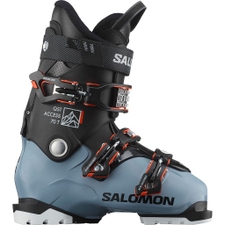 SalomonQST Access 70 T Ski Boots Copen Blue / Black / Orange KidsMSRP 199,95 €169,90 €Available Sizes:EU | UK | US | CM22,523,526,528,5
SalomonQST Access 70 T Ski Boots Copen Blue / Black / Orange KidsMSRP 199,95 €169,90 €Available Sizes:EU | UK | US | CM22,523,526,528,5
- - 47 %
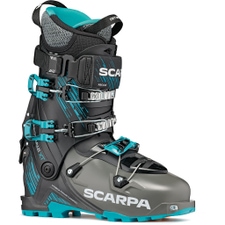 ScarpaMaestrale XT Ski Touring Boots Anthracite / Azure MenMSRP 748,95 €399,00 €Available Sizes:EU | UK | US | CM26,029,530,531,031,5
ScarpaMaestrale XT Ski Touring Boots Anthracite / Azure MenMSRP 748,95 €399,00 €Available Sizes:EU | UK | US | CM26,029,530,531,031,5 - - 37 %
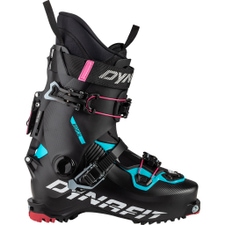 DynafitRadical W Ski Touring Boots Black / Flamingo WomenMSRP 549,95 €349,00 €Available Sizes:EU | UK | US | CM23,524,025,025,526,0
DynafitRadical W Ski Touring Boots Black / Flamingo WomenMSRP 549,95 €349,00 €Available Sizes:EU | UK | US | CM23,524,025,025,526,0
- - 64 %
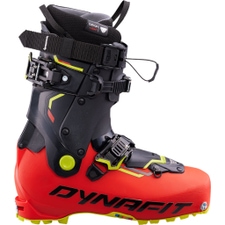 DynafitTLT 8 Ski Touring Boots Dawn / Black MenMSRP 549,95 €199,00 €Available Sizes:EU | UK | US | CM25,025,526,026,527,0
DynafitTLT 8 Ski Touring Boots Dawn / Black MenMSRP 549,95 €199,00 €Available Sizes:EU | UK | US | CM25,025,526,026,527,0
- - 28 %
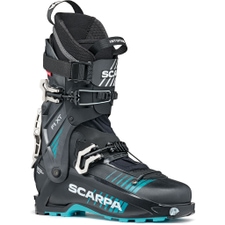 ScarpaF1 XT Ski Touring Boots Carbon /Azure MenMSRP 828,95 €599,00 €Available Sizes:EU | UK | US | CM24,025,026,027,028,0
ScarpaF1 XT Ski Touring Boots Carbon /Azure MenMSRP 828,95 €599,00 €Available Sizes:EU | UK | US | CM24,025,026,027,028,0
- - 50 %
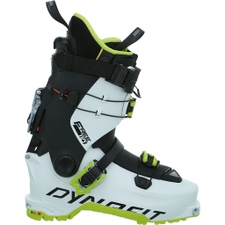 DynafitHoji Free 110 Ski Touring Boots MenMSRP 719,95 €359,00 €Available Sizes:EU | UK | US | CM26,026,528,029,029,5
DynafitHoji Free 110 Ski Touring Boots MenMSRP 719,95 €359,00 €Available Sizes:EU | UK | US | CM26,026,528,029,029,5
- - 68 %
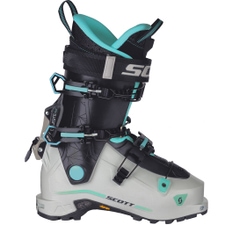 ScottCeleste Tour W Ski Touring Boots White / Mint / Green WomenMSRP 599,95 €190,00 €Available Sizes:EU | UK | US | CM24,027,5
ScottCeleste Tour W Ski Touring Boots White / Mint / Green WomenMSRP 599,95 €190,00 €Available Sizes:EU | UK | US | CM24,027,5
- - 53 %
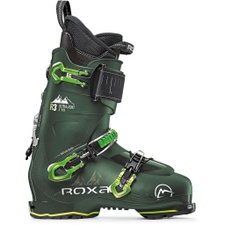 RoxaR3 J 90 TI Ski Boots Camo / Camo / Camo KidsMSRP 359,95 €169,00 €Available Sizes:EU | UK | US | CM22,523,526,527,5
RoxaR3 J 90 TI Ski Boots Camo / Camo / Camo KidsMSRP 359,95 €169,00 €Available Sizes:EU | UK | US | CM22,523,526,527,5 - - 30 %
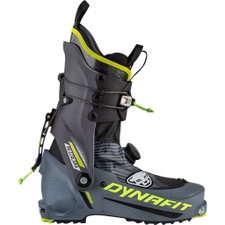 DynafitMezzalama Ski Touring Boots Magnet / Neon Yellow MenMSRP 699,95 €489,00 €Available Sizes:EU | UK | US | CM25,026,026,527,027,5
DynafitMezzalama Ski Touring Boots Magnet / Neon Yellow MenMSRP 699,95 €489,00 €Available Sizes:EU | UK | US | CM25,026,026,527,027,5
- - 33 %
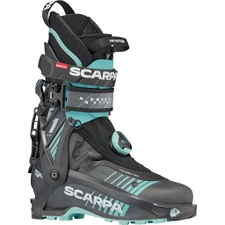 ScarpaF1 LT WMN Ski Touring Boots Carbon / Aqua WomenMSRP 798,95 €539,00 €Available Sizes:EU | UK | US | CM24,025,026,027,0
ScarpaF1 LT WMN Ski Touring Boots Carbon / Aqua WomenMSRP 798,95 €539,00 €Available Sizes:EU | UK | US | CM24,025,026,027,0
- - 32 %
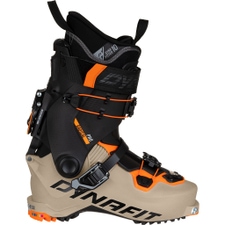 DynafitRadical Pro Ski Touring Boots Rock Khaki / Fluo Orange MenMSRP 699,95 €479,00 €Available Sizes:EU | UK | US | CM29,029,530,031,0
DynafitRadical Pro Ski Touring Boots Rock Khaki / Fluo Orange MenMSRP 699,95 €479,00 €Available Sizes:EU | UK | US | CM29,029,530,031,0
- - 34 %
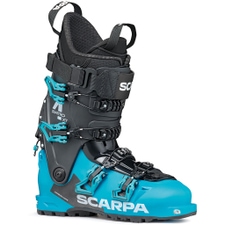 Scarpa4-Quattro XT Ski Touring Boots Ocean Blue MenMSRP 848,95 €559,00 €Available Sizes:EU | UK | US | CM25,526,026,527,027,5
Scarpa4-Quattro XT Ski Touring Boots Ocean Blue MenMSRP 848,95 €559,00 €Available Sizes:EU | UK | US | CM25,526,026,527,027,5
- - 43 %
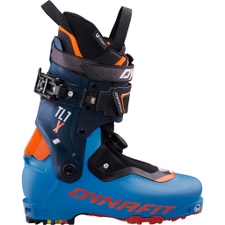 DynafitTLT X Ski Touring Boots Frost / Orange MenMSRP 699,95 €399,00 €Available Sizes:EU | UK | US | CM25,025,526,026,527,0
DynafitTLT X Ski Touring Boots Frost / Orange MenMSRP 699,95 €399,00 €Available Sizes:EU | UK | US | CM25,025,526,026,527,0
- - 64 %
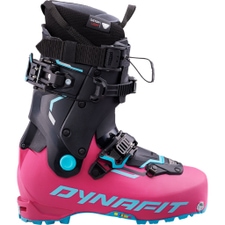 DynafitTLT 8 Ski Touring Boots Flamingo / Black WomenMSRP 549,95 €199,00 €Available Sizes:EU | UK | US | CM23,023,524,024,525,0
DynafitTLT 8 Ski Touring Boots Flamingo / Black WomenMSRP 549,95 €199,00 €Available Sizes:EU | UK | US | CM23,023,524,024,525,0
- - 48 %
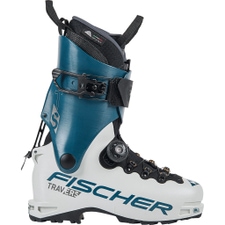 FischerTravers TS Ski Touring Boots White / Blue WomenMSRP 569,95 €299,00 €Available Sizes:EU | UK | US | CM23,524,525,526,527,5
FischerTravers TS Ski Touring Boots White / Blue WomenMSRP 569,95 €299,00 €Available Sizes:EU | UK | US | CM23,524,525,526,527,5 - - 18 %
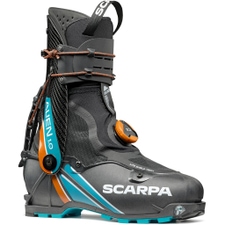 ScarpaAlien 1.0 Ski Touring Boots Carbon MenMSRP 1098,95 €899,00 €Available Sizes:EU | UK | US | CM26,027,028,029,0
ScarpaAlien 1.0 Ski Touring Boots Carbon MenMSRP 1098,95 €899,00 €Available Sizes:EU | UK | US | CM26,027,028,029,0
- - 33 %
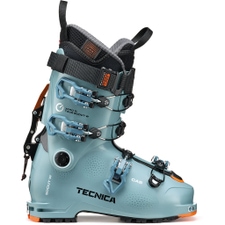 TecnicaZero G Tour Scout W Ski Touring Boots Lichen Blue WomenMSRP 669,95 €449,00 €Available Sizes:EU | UK | US | CM25,526,026,527,5
TecnicaZero G Tour Scout W Ski Touring Boots Lichen Blue WomenMSRP 669,95 €449,00 €Available Sizes:EU | UK | US | CM25,526,026,527,5
- - 16 %
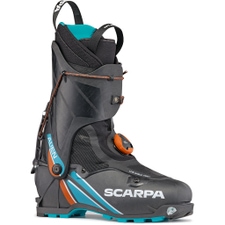 ScarpaAlien Ski Touring Boots Carbon / Azure MenMSRP 698,95 €589,00 €Available Sizes:EU | UK | US | CM25,026,027,028,029,0
ScarpaAlien Ski Touring Boots Carbon / Azure MenMSRP 698,95 €589,00 €Available Sizes:EU | UK | US | CM25,026,027,028,029,0
- - 30 %
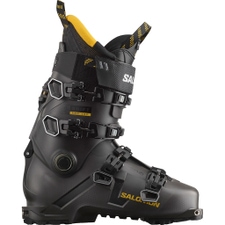 SalomonShift Pro 120 AT Ski Boots Belluga / Black / Solar Power MenMSRP 599,95 €419,90 €Available Sizes:EU | UK | US | CM24,529,530,5
SalomonShift Pro 120 AT Ski Boots Belluga / Black / Solar Power MenMSRP 599,95 €419,90 €Available Sizes:EU | UK | US | CM24,529,530,5
- - 43 %
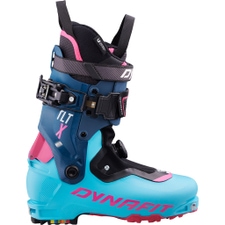 DynafitTLT X W Ski Touring Boots Silvretta / Pink WomenMSRP 699,95 €399,00 €Available Sizes:EU | UK | US | CM23,023,524,024,525,0
DynafitTLT X W Ski Touring Boots Silvretta / Pink WomenMSRP 699,95 €399,00 €Available Sizes:EU | UK | US | CM23,023,524,024,525,0
- - 48 %
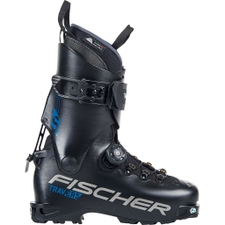 FischerTravers TS Ski Touring Boots Black MenMSRP 569,95 €299,00 €Available Sizes:EU | UK | US | CM26,527,528,529,5
FischerTravers TS Ski Touring Boots Black MenMSRP 569,95 €299,00 €Available Sizes:EU | UK | US | CM26,527,528,529,5 - - 27 %
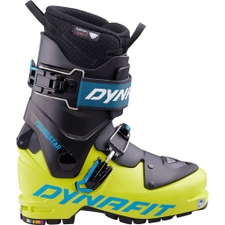 DynafitYoungstar Ski Boots Lime Punch / Black KidsMSRP 449,95 €329,00 €Available Sizes:EU | UK | US | CM22,524,525,526,5
DynafitYoungstar Ski Boots Lime Punch / Black KidsMSRP 449,95 €329,00 €Available Sizes:EU | UK | US | CM22,524,525,526,5
- - 25 %
 DynafitTigard 130 Ski Touring Boots Capulet Olive / Fluo Orange MenMSRP 799,95 €599,00 €Available Sizes:EU | UK | US | CM26,027,027,528,028,5
DynafitTigard 130 Ski Touring Boots Capulet Olive / Fluo Orange MenMSRP 799,95 €599,00 €Available Sizes:EU | UK | US | CM26,027,027,528,028,5
- - 33 %
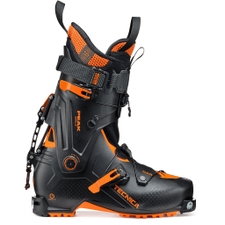 TecnicaZero G Peak Ski Touring Boots Black / Orange MenMSRP 799,95 €539,00 €Available Sizes:EU | UK | US | CM25,528,529,530,5
TecnicaZero G Peak Ski Touring Boots Black / Orange MenMSRP 799,95 €539,00 €Available Sizes:EU | UK | US | CM25,528,529,530,5
- - 33 %
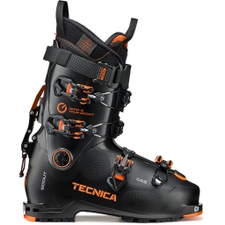 TecnicaZero G Tour Scout Ski Touring Boots Black MenMSRP 669,95 €449,00 €Available Sizes:EU | UK | US | CM26,026,527,027,528,0
TecnicaZero G Tour Scout Ski Touring Boots Black MenMSRP 669,95 €449,00 €Available Sizes:EU | UK | US | CM26,026,527,027,528,0
- - 35 %
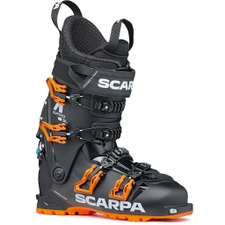 Scarpa4-Quattro SL Ski Touring Boots Black / Orange MenMSRP 748,95 €489,00 €Available Sizes:EU | UK | US | CM25,526,026,527,027,5
Scarpa4-Quattro SL Ski Touring Boots Black / Orange MenMSRP 748,95 €489,00 €Available Sizes:EU | UK | US | CM25,526,026,527,027,5
- - 32 %
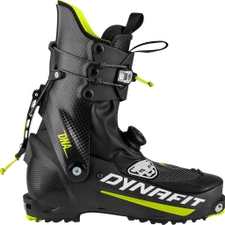 DynafitDNA Ski Touring Boots Black / Neon Yellow MenMSRP 1099,95 €749,00 €Available Sizes:EU | UK | US | CM26,527,027,528,028,5
DynafitDNA Ski Touring Boots Black / Neon Yellow MenMSRP 1099,95 €749,00 €Available Sizes:EU | UK | US | CM26,527,027,528,028,5
- - 27 %
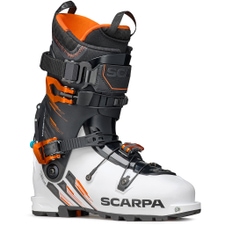 ScarpaMaestrale RS Ski Touring Boots White / Black / Orange MenMSRP 768,95 €559,00 €Available Sizes:EU | UK | US | CM25,526,026,527,027,5
ScarpaMaestrale RS Ski Touring Boots White / Black / Orange MenMSRP 768,95 €559,00 €Available Sizes:EU | UK | US | CM25,526,026,527,027,5
- - 41 %
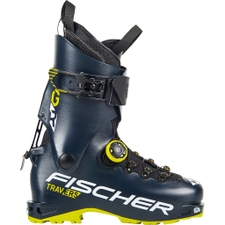 FischerTravers GR Ski Touring Boots Darkblue MenMSRP 679,95 €399,00 €Available Sizes:EU | UK | US | CM25,526,527,529,5
FischerTravers GR Ski Touring Boots Darkblue MenMSRP 679,95 €399,00 €Available Sizes:EU | UK | US | CM25,526,527,529,5 - - 31 %
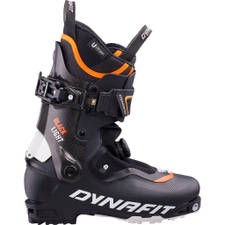 DynafitBlacklight Ski Touring Boots White / Carbon MenMSRP 799,95 €549,00 €Available Sizes:EU | UK | US | CM26,026,527,528,028,5
DynafitBlacklight Ski Touring Boots White / Carbon MenMSRP 799,95 €549,00 €Available Sizes:EU | UK | US | CM26,026,527,528,028,5
- - 27 %
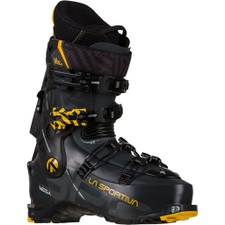 La SportivaVega Ski Touring Boots Black / Yellow MenMSRP 549,95 €399,00 €Available Sizes:EU | UK | US | CM26,527,528,028,529,0
La SportivaVega Ski Touring Boots Black / Yellow MenMSRP 549,95 €399,00 €Available Sizes:EU | UK | US | CM26,527,528,028,529,0
- - 33 %
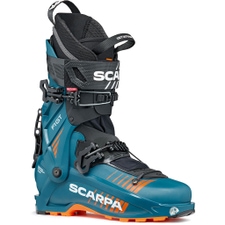 ScarpaF1 GT Ski Touring Boots Petrol / Orange MenMSRP 748,95 €499,00 €Available Sizes:EU | UK | US | CM25,026,027,028,029,0
ScarpaF1 GT Ski Touring Boots Petrol / Orange MenMSRP 748,95 €499,00 €Available Sizes:EU | UK | US | CM25,026,027,028,029,0
- - 27 %
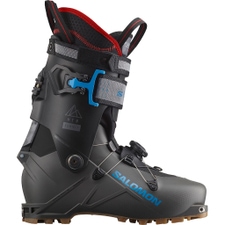 MTN Summit Ski Touring Boots Black / Anthracite / Transcend Blue Men
MTN Summit Ski Touring Boots Black / Anthracite / Transcend Blue Men MSRP 749,95 €549,00 €Available Sizes:EU | UK | US | CM25,526,527,528,529,5
MSRP 749,95 €549,00 €Available Sizes:EU | UK | US | CM25,526,527,528,529,5 - - 44 %
 FischerRanger One130 VAC GW Ski Boots Cola MenMSRP 619,90 €349,90 €Available Sizes:EU | UK | US | CM27,5
FischerRanger One130 VAC GW Ski Boots Cola MenMSRP 619,90 €349,90 €Available Sizes:EU | UK | US | CM27,5 - - 25 %
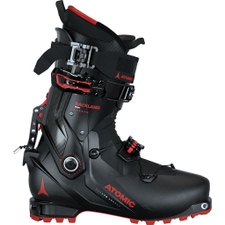 AtomicBackland Carbon Ski Touring Boots Black / Red MenMSRP 799,95 €599,00 €Available Sizes:EU | UK | US | CM25,526,527,528,529,5
AtomicBackland Carbon Ski Touring Boots Black / Red MenMSRP 799,95 €599,00 €Available Sizes:EU | UK | US | CM25,526,527,528,529,5
- - 30 %
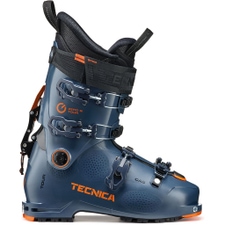 TecnicaZero G Tour Ski Touring Boots Dark / Avio MenMSRP 569,95 €399,00 €Available Sizes:EU | UK | US | CM25,526,026,528,028,5
TecnicaZero G Tour Ski Touring Boots Dark / Avio MenMSRP 569,95 €399,00 €Available Sizes:EU | UK | US | CM25,526,026,528,028,5
- - 30 %
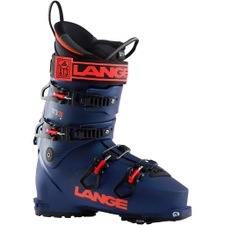 LangeXT3 Free 130 MV GW Ski Boots MenMSRP 709,95 €499,90 €Available Sizes:EU | UK | US | CM27,028,529,5
LangeXT3 Free 130 MV GW Ski Boots MenMSRP 709,95 €499,90 €Available Sizes:EU | UK | US | CM27,028,529,5 - - 39 %
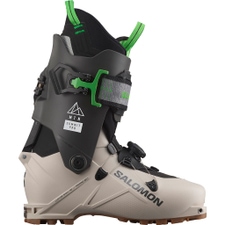 SalomonMTN Summit Pro Ski Touring Boots Rainy Day / Belluga / Pastel Neon Green MenMSRP 649,95 €399,00 €Available Sizes:EU | UK | US | CM30,5
SalomonMTN Summit Pro Ski Touring Boots Rainy Day / Belluga / Pastel Neon Green MenMSRP 649,95 €399,00 €Available Sizes:EU | UK | US | CM30,5
- - 37 %
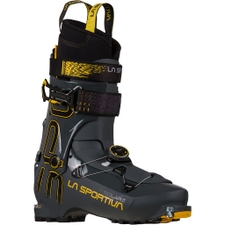 La SportivaSolar II Ski Touring Boots Carbon / Yellow MenMSRP 549,95 €349,00 €Available Sizes:EU | UK | US | CM27,028,028,529,030,0
La SportivaSolar II Ski Touring Boots Carbon / Yellow MenMSRP 549,95 €349,00 €Available Sizes:EU | UK | US | CM27,028,028,529,030,0
- - 30 %
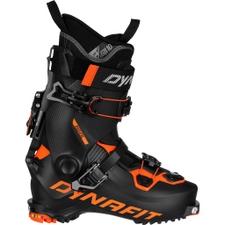 DynafitRadical Ski Touring Boots Black / Fluo Orange MenMSRP 599,95 €419,00 €Available Sizes:EU | UK | US | CM25,526,026,527,027,5
DynafitRadical Ski Touring Boots Black / Fluo Orange MenMSRP 599,95 €419,00 €Available Sizes:EU | UK | US | CM25,526,026,527,027,5
- - 30 %
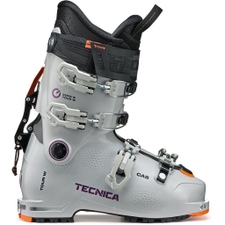 TecnicaZero G Tour W Ski Touring Boots Cool Grey WomenMSRP 569,95 €399,00 €Available Sizes:EU | UK | US | CM23,023,524,525,526,0
TecnicaZero G Tour W Ski Touring Boots Cool Grey WomenMSRP 569,95 €399,00 €Available Sizes:EU | UK | US | CM23,023,524,525,526,0
- - 25 %
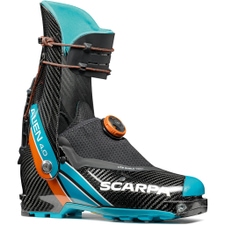 ScarpaAlien 4.0 Ski Touring Boots Black MenMSRP 1998,95 €1499,00 €Available Sizes:EU | UK | US | CM40,041,042,043,044,0
ScarpaAlien 4.0 Ski Touring Boots Black MenMSRP 1998,95 €1499,00 €Available Sizes:EU | UK | US | CM40,041,042,043,044,0
- - 10 %
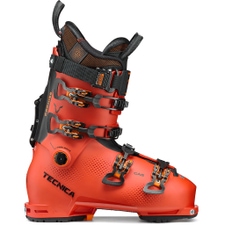 TecnicaCochise 130 DYN GW Ski Boots Brick Orange MenMSRP 699,95 €629,90 €Available Sizes:EU | UK | US | CM28,028,529,030,0
TecnicaCochise 130 DYN GW Ski Boots Brick Orange MenMSRP 699,95 €629,90 €Available Sizes:EU | UK | US | CM28,028,529,030,0
- - 33 %
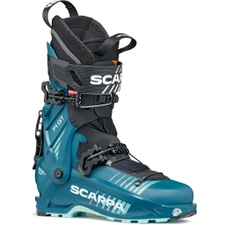 ScarpaF1 GT WMN Ski Touring Boots Petrol / Aqua WomenMSRP 748,95 €499,00 €Available Sizes:EU | UK | US | CM23,024,025,026,027,0
ScarpaF1 GT WMN Ski Touring Boots Petrol / Aqua WomenMSRP 748,95 €499,00 €Available Sizes:EU | UK | US | CM23,024,025,026,027,0
- - 10 %
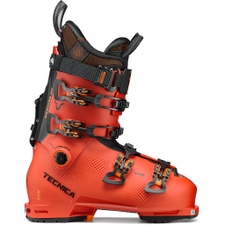 TecnicaCochise HV 130 DYN GW Ski Boots Brick Orange MenMSRP 699,95 €629,90 €Available Sizes:EU | UK | US | CM26,028,028,529,530,5
TecnicaCochise HV 130 DYN GW Ski Boots Brick Orange MenMSRP 699,95 €629,90 €Available Sizes:EU | UK | US | CM26,028,028,529,530,5
- - 29 %
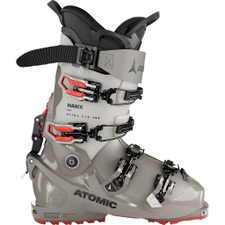 AtomicHawx Ultra XTD 130 GW Ski Boots Cement / Stone / Red MenMSRP 779,95 €549,90 €Available Sizes:EU | UK | US | CM27,5
AtomicHawx Ultra XTD 130 GW Ski Boots Cement / Stone / Red MenMSRP 779,95 €549,90 €Available Sizes:EU | UK | US | CM27,5
- - 24 %
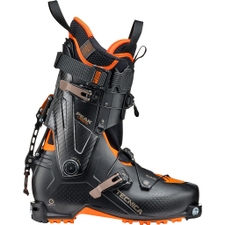 TecnicaZero G Peak Carbon Ski Touring Boots Black / Titanium MenMSRP 949,95 €719,00 €Available Sizes:EU | UK | US | CM28,530,5
TecnicaZero G Peak Carbon Ski Touring Boots Black / Titanium MenMSRP 949,95 €719,00 €Available Sizes:EU | UK | US | CM28,530,5
- - 30 %
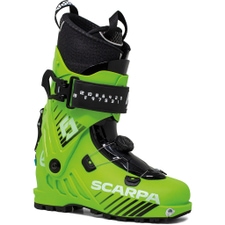 ScarpaF1 Jr Ski Touring Boots Green Lime KidsMSRP 498,95 €349,00 €Available Sizes:EU | UK | US22,022,523,023,524,0
ScarpaF1 Jr Ski Touring Boots Green Lime KidsMSRP 498,95 €349,00 €Available Sizes:EU | UK | US22,022,523,023,524,0
- - 11 %
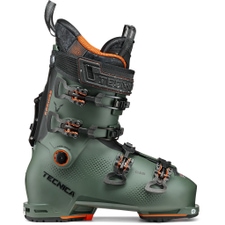 TecnicaCochise 120 DYN GW Ski Boots Progressive Green MenMSRP 649,95 €579,90 €Available Sizes:EU | UK | US | CM27,529,030,031,0
TecnicaCochise 120 DYN GW Ski Boots Progressive Green MenMSRP 649,95 €579,90 €Available Sizes:EU | UK | US | CM27,529,030,031,0
- - 37 %
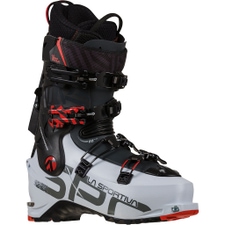 La SportivaVega W Ski Touring Boots Ice WomenMSRP 549,95 €349,00 €Available Sizes:EU | UK | US | CM23,524,024,525,025,5
La SportivaVega W Ski Touring Boots Ice WomenMSRP 549,95 €349,00 €Available Sizes:EU | UK | US | CM23,524,024,525,025,5
- - 33 %
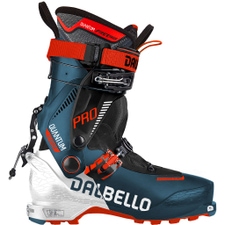 DalbelloQuantum Free Pro Ski Touring Boots Blue / White MenMSRP 749,95 €499,00 €Available Sizes:UK | US | CM28,529,530,5
DalbelloQuantum Free Pro Ski Touring Boots Blue / White MenMSRP 749,95 €499,00 €Available Sizes:UK | US | CM28,529,530,5
- - 37 %
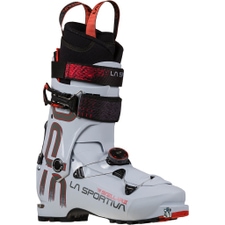 La SportivaStellar II Ski Touring Boots Ice / Hibiscus WomenMSRP 549,95 €349,00 €Available Sizes:EU | UK | US | CM24,024,525,025,526,0
La SportivaStellar II Ski Touring Boots Ice / Hibiscus WomenMSRP 549,95 €349,00 €Available Sizes:EU | UK | US | CM24,024,525,025,526,0
- - 33 %
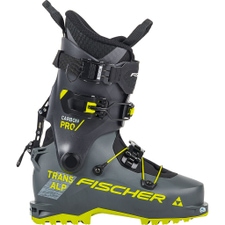 FischerTransalp Carbon Pro Ski Touring Boots Rhino Grey / Carbon MenMSRP 899,95 €599,00 €Available Sizes:EU | UK | US | CM26,530,5
FischerTransalp Carbon Pro Ski Touring Boots Rhino Grey / Carbon MenMSRP 899,95 €599,00 €Available Sizes:EU | UK | US | CM26,530,5 - - 37 %
 AtomicHawx Prime XTD 120 GW Ski Boots Army Green-X / Black / Orange MenMSRP 679,95 €429,90 €Available Sizes:EU | UK | US | CM29,531,5
AtomicHawx Prime XTD 120 GW Ski Boots Army Green-X / Black / Orange MenMSRP 679,95 €429,90 €Available Sizes:EU | UK | US | CM29,531,5
- - 35 %
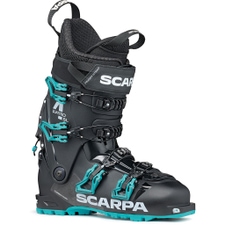 Scarpa4-Quattro SL WMN Ski Touring Boots Black/ Lagoon WomenMSRP 748,95 €489,00 €Available Sizes:EU | UK | US | CM22,022,523,023,524,0
Scarpa4-Quattro SL WMN Ski Touring Boots Black/ Lagoon WomenMSRP 748,95 €489,00 €Available Sizes:EU | UK | US | CM22,022,523,023,524,0
- - 42 %
 ScarpaTested product F1 Ski Touring Boots Anthracite / Ottanio MenMSRP 668,95 €390,00 €Available Sizes:EU | UK | US | CM26,527,028,029,030,0
ScarpaTested product F1 Ski Touring Boots Anthracite / Ottanio MenMSRP 668,95 €390,00 €Available Sizes:EU | UK | US | CM26,527,028,029,030,0
- - 21 %
 AtomicBackland XTD Carbon 120 Ski Touring Boots Black / Army Green-X / Orange MenMSRP 799,95 €629,00 €Available Sizes:EU | UK | US | CM25,526,527,528,529,5
AtomicBackland XTD Carbon 120 Ski Touring Boots Black / Army Green-X / Orange MenMSRP 799,95 €629,00 €Available Sizes:EU | UK | US | CM25,526,527,528,529,5
- - 32 %
 DynafitRadical Pro W Ski Touring Boots Royal Purple / Marine Blue WomenMSRP 699,95 €479,00 €Available Sizes:EU | UK | US | CM23,024,025,025,526,0
DynafitRadical Pro W Ski Touring Boots Royal Purple / Marine Blue WomenMSRP 699,95 €479,00 €Available Sizes:EU | UK | US | CM23,024,025,025,526,0 - - 29 %
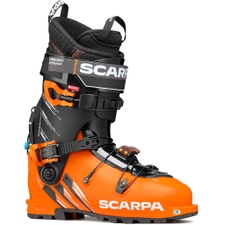 ScarpaMaestrale Ski Touring Boots Orange / Black MenMSRP 698,95 €499,00 €Available Sizes:EU | UK | US | CM25,526,026,527,027,5
ScarpaMaestrale Ski Touring Boots Orange / Black MenMSRP 698,95 €499,00 €Available Sizes:EU | UK | US | CM25,526,026,527,027,5
- - 24 %
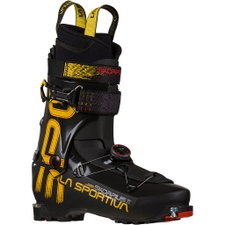 La SportivaSkorpius CR II Ski Touring Boots Black / Yellow MenMSRP 629,95 €479,00 €Available Sizes:EU | UK | US | CM27,027,528,529,030,0
La SportivaSkorpius CR II Ski Touring Boots Black / Yellow MenMSRP 629,95 €479,00 €Available Sizes:EU | UK | US | CM27,027,528,529,030,0
- - 36 %
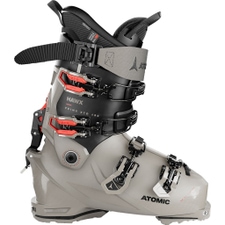 AtomicHawx Prime XTD 130 GW Ski Boots Cement / Black / Red MenMSRP 779,95 €499,90 €Available Sizes:EU | UK | US | CM25,526,529,530,531,5
AtomicHawx Prime XTD 130 GW Ski Boots Cement / Black / Red MenMSRP 779,95 €499,90 €Available Sizes:EU | UK | US | CM25,526,529,530,531,5



To make your skitour up pure summits, descents through untouched winter wonderlands and those quick ascents on race touring skis a real joy, you need the fitting touring boots. These are, depending on their design, more or less different to alpine boots. They all have two modes: The ascent-walking-mode and the descent-skiing-mode. In walking-mode, they are way more flexible and softer than alpine boots are. In ski-mode, they offer the needed stability for the descent. The flexibility of the boot itself depends on its special characteristics. It can be distinguished between allround, uphill focused, freeride and racing touring boots. These are manufactuered by different brands such as Dynafit, Scarpa, La Sportiva, Scott, Fischer or Salomon for both women and men.
Characteristics of touring boots
Just like touring skis, touring boots have individual characteristics, based on their manufacturer, materials used and design.
Cuff rotation: This is really important for the ascent. The higher the rotation degree, the more movability there is between boot and cuff. That makes walking with the boot more comfortable, meaning a nicer ascent.
Cuff alignment angle: This angle is common known from alpine ski boots. It basically decides the position of the cuff in ski-mode. The larger the angle, the more aggressive the ski is when going downhill. On many touring boots, this angle can be adjusted accordingly. Which angle fits you best depends on your technique when skiing.
Inner shoe: It is distinguished between the conventional lacing one, and the thermoformable one. With the latter, the inner shoe is adapted to fit the individual foot, reaching a optimum fit.
Flex: The flex tells the stiffness of the boot forwards. The higher the flex, the stiffer and the more stable the boot when going downhill. At the same time, the ankles lose flexibility. Generally, a downhill focused touring boot will have a higher flex. However, this measure is not standardized, meaning that direct comparisons of flex between different brands might be misleading.
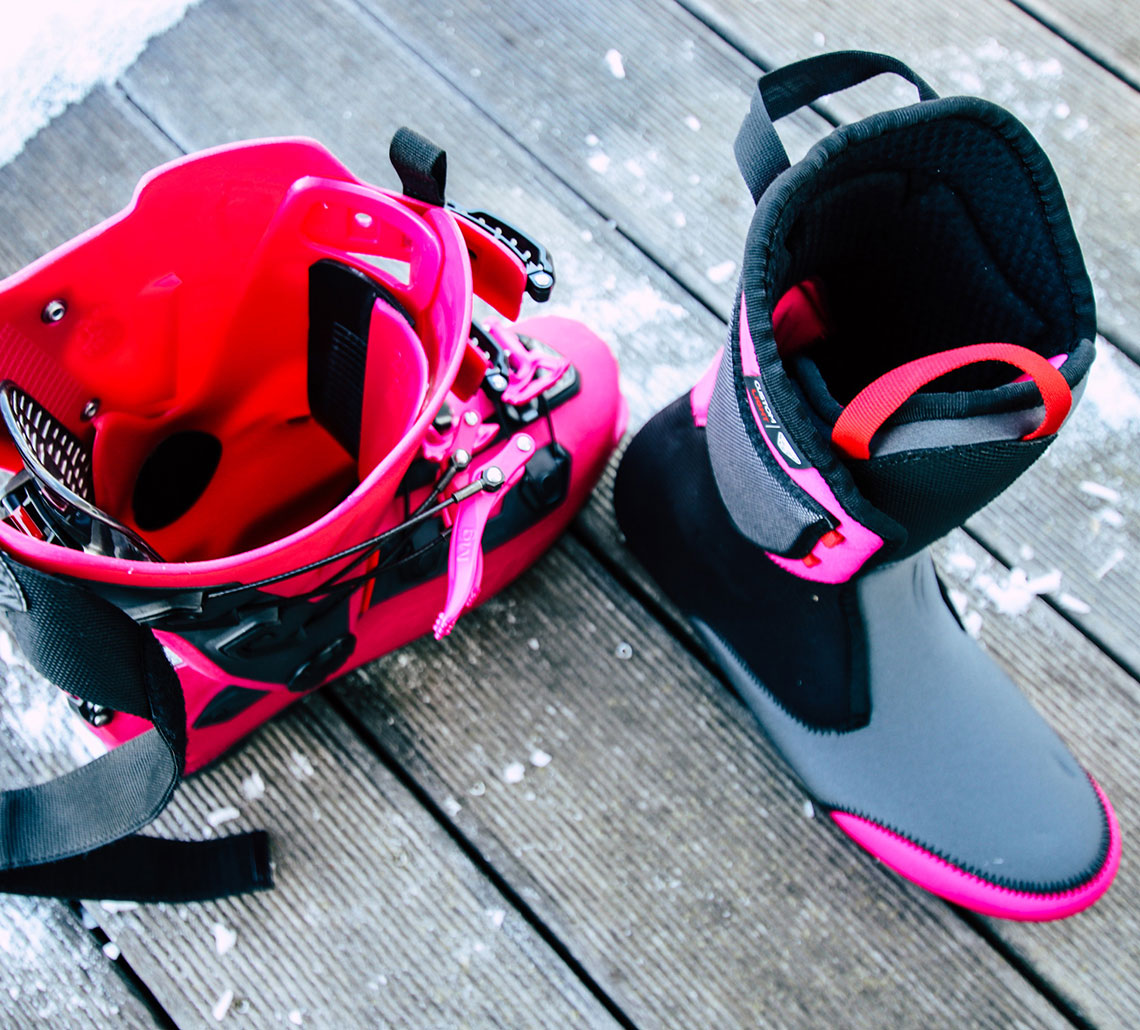
Buckles: Touring boots mostly come with three or four buckles. Uphill focused boots will rather have two buckles or BOA-System, leading to more flexibility, while a freeride touring boot will have three or four buckles to reach more control and downhill performance. It is especially convenient when these buckles have precision adjustment.
Uphill focused or freerider, allrounder or racer – The different applications of touring boots
It is not only the size and fit that matter, but much more making the characteristics of the boot fit the planned area of use as well as the rest of the equipment. Because just like the binding needs to fit the ski, the boot is also part of the big thing. Whoever is going for an uphill-focused ski with a light-weight tec-binding, should also be using a light-weight touring boot. At the same time, a freerider should use a more stable touring boot for his outdoor adventures.
Uphill-focused touring boot: With this boot, the combination of light weight and comfort in the ascent are focused on. The cuff rotation will be higher and the weight is at around 1.000g.
Freeride touring boot: This boot needs to be able to control a wide freeride ski, meaning it has to be rather stiff and very stable. As of this, it weighs more than other touring boots: 1.600g and up. This boot mostly comes with four buckles and a larger cuff alignment angle.
Allround touring boot: Just like with touring skis, there are also allround touring boots. These are built to balance uphill and downhill performance: Not to heavy for the ascent but at the same time stable for enough for the descent. This boot weighs up to 1.500g.
Race touring boot: This boot is, just like the race touring ski and ist binding, very minimalistic. The most important factor is the weight. To minimize this, only two buckles, lacing or the BOA-System and light materials such as carbon are used. Moreover is the inner shoe thinner and with less cushion, making the boot weigh only around 850g but a little less comfortable than a regular touring boot.
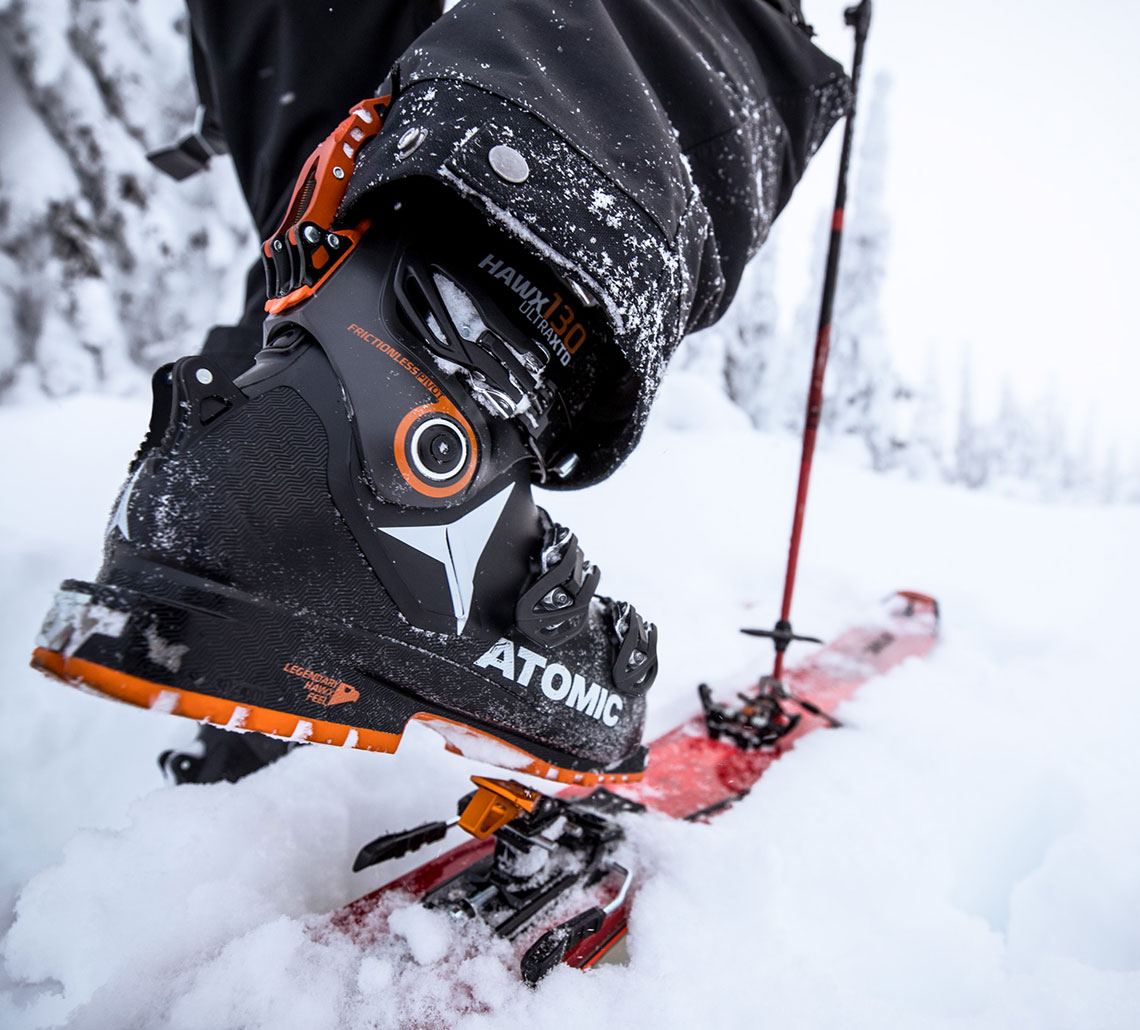
The touring boot needs to fit both foot and binding
Women’s and men’s touring boots are different in their stiffness and height. While men’s boots are usually a bit stiffer, women’s boots have a shorter cuff. This is because the boot is designed to fit women specifically, and these generally have a lower calf muscle. As of this, you should always go for the boot to fit your body. Another important aspect is the size. Touring boots come in mondopoint sizes, just like alpine boots. To make your boot and sole length fit perfectly, we have created a sole length and mondo point guide for touring boots. Also be aware, that the inner shoe usually wears out a little after a while, meaning better buy a smaller one than one that is too large. When trying the boots on, it is totally acceptable if your toes touch the boot. Only when standing up and bending you knees, they should not touch anymore or just touch slightly. But the boot really needs to fit tightly, not too tight though. Too tight boots will lead to pain while too much space will cause blistering.
When choosing your ski touring boot, it is also crucial that it is compatible with your bindings. Most touring boots have pin inserts, however there are still some boots that are not compatible with some bindings and vice versa. Sometimes, the binding can and should be adjusted accordingly. At the same time, there are some touring boots that do no fit frame bindings.
What else to consider when buying touring boots
Before heading into your first ski tour with your new ski touring boots, here is some helpful advice: If you plan on using your touring boots with alpine bindings – which generally is not advisable – you might have to change the outer soles (only possible in freetouring). On touring boots, these rubberized and moulded, making them higher and therefore not release properly in alpine bindings. Especially when doing alpine tours, it can be helpful to have crampons with you, these are compatible with most touring boots and can be purchased separately. But most important is your safety equipment. Because you should never head into the backcountry without having your tracker beacon, shovel and avalanche probe with you!
Read more regarding touring boots
- Ski touring Guide: Find the best equipment for your next ski tour